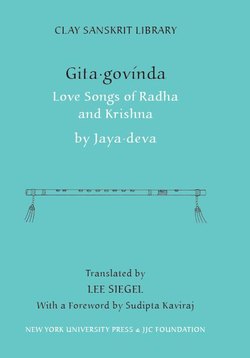Читать книгу Gita Govinda - Jayadeva - Страница 23
На сайте Литреса книга снята с продажи.
Оглавлениеtural depictions of the sexual pastimes of heavenly beings. There was, furthermore, a shift in sectarian orientation from Shaivism to Vaishnavism, and an efflorescence of devotional practice. By way of influence from South India, the god Krishna was becoming the focus of that popular devotionalism, a rapturous bhakti that conceived of and articulated the devotees relationship with the deity in terms of passionate human love and longing. It was an ideal milieu for the composition of a Sanskrit court poem celebrating the erotic relationship of Radha and Krishna.
Not long after the composition of “Gita·govinda,” however, with the end of Hindu rule in Bengal and the decline of the Ganga dynasty in Orissa, courtly ideals and sensibilities dwindled, Sanskrit poetry lost its royal patronage and aristocratic audiences. Vernacular poetry, much of it echoing Jaya·deva’s songs in both form and content, began to flourish. As the ecstatic devotional bhakti movement gained momentum in the northeast of medieval India, the rasika became a bhakta, the connoisseur a devotee, and Jaya·deva, the refined courtly kavi, became Jaya·deva the popular pious saint, a wandering singer of adorational psalms to Lord Krishna. It became expedient to divine a new biography of Jaya·deva through a theological reading of the “Gita·govinda,” one that transformed the literary text into a sort of hymnal for the medieval bhakti movement.
Legends of the life of Jaya·deva, the zealous and exemplary bhakta, were told, and have been recorded, in Bengali, Oriya, Hindi, and other vernacular Indian languages. These were amalgamated in the early nineteenth century into the Jayadevacarita of Bana·mali·dasa, a Sanskrit, and therefore ________
